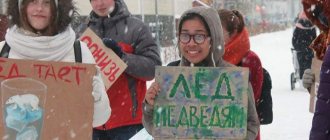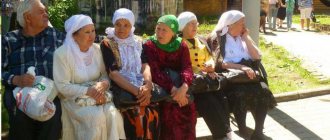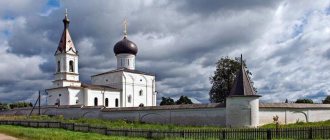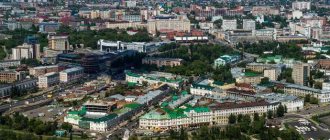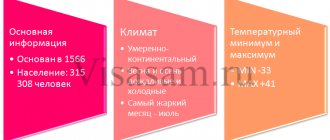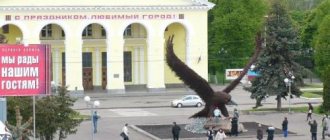This region is located in the interfluve of the Volga and Don, where the Volga, Chernozem and Central regions meet, and therefore the population of the Penza region is very heterogeneous. The characteristics of its settlement indicate an intermediate position among the surrounding areas. Although in terms of natural and climatic conditions it is similar to the Black Earth Region, the population of the Penza region is more inclined towards urbanization, and in this level it significantly exceeds the neighboring regions - the Tambov and Voronezh regions, and is inferior to the Saratov and Ulyanovsk regions. In total, 1,341,526 people live in the Penza region according to Rosstat (2017), of which 930,004 people live in cities.
Characteristic
The urban population of the Penza region is less than the national average, but its number is gradually growing: in 1990, sixty-three percent of the population lived in cities, and in 2005, already sixty-six. This, of course, is not real evidence of urbanization; such trends are observed almost everywhere, since rural areas are constantly losing their population. Just like most of the Russian regions, this region is monocentric. The urban population of the Penza region is half concentrated in the capital of half a million. The cities of Kuznetsk, an industrial center, and Zarechny, a scientific, formerly closed city of Rosatom (ZATO Penza-19), are quite average in size. The remaining towns (there are eight of them) are tiny, more than half of them do not even have ten thousand inhabitants.
Therefore, we can say that the population of the cities of the Penza region (with the exception of the three main ones) leads a semi-rural lifestyle, since the urban infrastructure is rather poorly developed everywhere. In addition, all cities, including Penza, have been losing their residents for the last ten years. The population census of the Penza region eloquently speaks about this. Small towns are depopulating the most (up to twenty percent of the population has been lost in a decade), because during Perestroika, as elsewhere, the food industry and mechanical engineering enterprises that formed their economic base collapsed. The regional center and Zarechny more firmly maintain a young age structure, but even here the population is gradually declining.
Population of the Penza region by district and city
According to him, the urban population decreased to 893 thousand 214 people, the rural population - to 398 thousand 997.
Based on the proposal of the Ministry of Labor, Social Protection and Demography of the Penza Region, for 2022, establish the cost of living per capita at 10,038 rubles, for the working population - 10,941 rubles, pensioners - 9,381 rubles, children - 10,402 rubles.
In January 2021, the situation on the labor market in the Kirov region is characterized as stable, according to the local Employment Center.
Population of Penza for 2021: how many people live by district. Current information about the number of people, what place the city occupies in Russia, growth dynamics over the years. Exact data in table form on our online resource.
Some statistics
The population density of the Penza region is quite close to the average for Russia (its European part), there are thirty-two people per square kilometer. Suburban zones are more densely populated: in Penza, two hundred and sixty, in Kuznetsk, sixty-seven people per square kilometer. The southern regions are agricultural, and therefore have only twelve people per square kilometer. The population of the Penza region is growing slightly due to immigrants, but it is also decreasing a little faster, because people from the outback are leaving not only for Penza.
Rural settlement is characterized by large and medium-sized settlements, which predominate in the Black Earth Region. This slightly mitigates the problems of rural residents' access to basic social services. Nevertheless, about ten percent of the population of the districts of the Penza region has been lost in recent years. The depressed state of the regional economy and, as a consequence, problems with employment are pushing people out of their homes. By the way, the migration outflow is even stronger among neighbors whose regions are just as economically peripheral and where people have the same low incomes - in Mordovia, in the Ulyanovsk and Tambov regions. A rather bleak outlook emerges: the outflow of the population to other regions, where wages are higher, will only increase.
Population of the Penza region for 2021
We shop near our house at the “Store in my area” chain. We rarely go to the market or grocery store - it’s a waste of time, and the prices there are not always lower than store prices.
Now the world has become open, and with the development of the network, people see how they live in other cities and countries, they have a desire for this life with a more developed infrastructure and the benefits of civilization. Conditions in our outback cannot satisfy all these needs, and citizens are leaving in search of a new life. There are also a number of programs that provide funds for living, but they go to a very small part of the population. Last year (compared to 2019), the number of children born decreased by 657 people (6.4%). The number of deaths increased by 4,298 people (23.4%).
Problems
Most of all, the population of the Penza region in 2021 suffers from a lack of social services. Depopulation and aging of the population are much more significant here than in all other regions of the Volga region. This picture is especially depressing in rural areas. How much of the population will remain in the Penza region in five to ten years if drastic measures are not taken to attract people to these fertile lands? The statistics are simply frightening.
Incomes here are very low. A severe economic recession shook the entire region, and the depressive state has not yet passed either in industry (especially in mechanical engineering) or in agriculture. The population does not have any social guarantees, since employment predominates in the informal sectors of the economy. The level of education of the population has dropped significantly, and qualified medical care is practically unavailable in rural areas.
Possible benefits
Gradually, in recent years, some social benefits have begun to appear. This is an increase in investment in regional economic structures, so income growth among the population promises to be higher. Naturally, very favorable climatic conditions work as a plus: nature here seems to have been created in order to develop personal subsidiary plots and farming. This, of course, slightly softens the living conditions of the poor population given their lack of resources. In any case, the threat of famine is much less acute. In addition, in this climate, socially determined diseases are not so common.
And the territories of the region themselves, with their historical development as trade and craft centers since the seventeenth century, are conducive to a measured, calm and long life. However, demographic indicators are not encouraging, since they mark the region as long-aged and depopulating. The birth rate here is one of the most problematic in the country, and the overall mortality rate is much higher than the national one. The natural population decline in the Penza region is one percent per year, which is twice as high as the national figure. And in aging villages, the mortality rate reaches a terrible figure - twenty-two percent! It is necessary to facilitate in every possible way the influx of population to these places, and in the last few years this matter seems to have moved forward.
Migration and consequences
In Penza, the population has slightly rejuvenated due to the migration influx, but natural decline is still high. The mortality rate is lower than in rural areas - only fourteen and a half percent, but the birth rate, apparently, is not encouraged in any way, it is much lower than that recorded in the country - less than eight percent. Why is this happening? Because this process began in Soviet times, when young people left the countryside. The age structure of the region is generally similar to all neighboring regions with their high percentage of elderly population.
During the twentieth century, there was a constant migration outflow from the Black Earth Region. Then Perestroika came and the birth rate suffered a huge decline: from 1985 to 2005, the share of children decreased by almost a third. It was 22.5%, but became 14.6%, which brought the region closer to the worst indicators. There are fewer children only in the Nizhny Novgorod region. At the same time, the demographic burden here is very high: six hundred and twenty people are not able to work per thousand of the working-age population.
Lifespan
The migration outflow weakened somewhat during the crisis of the nineties, but the influx of migrants to the Penza region was small, despite the excellent natural and climatic conditions and the very low cost of living. When stressful migrations from the CIS countries ended, the Penza region began to lose population again - at the same rates.
It would seem that in this climate life expectancy should be high. Or at least close to the all-Russian one - sixty-five and a half years. However, this figure, in contrast to national trends, is declining here. Longevity in the Penza region is not very good. Life expectancy for rural men is especially low - in 2005 it was fifty-six and a half years. The reason is the huge degree of marginalization of the village.
Population of Penza for 2021. Number of residents of Penza
Data on the number of city residents are taken from the Federal State Statistics Service. The official website of the Rosstat service is www.gks.ru. The data was also taken from the unified interdepartmental information and statistical system, the official website of EMISS www.fedstat.ru. The website publishes data on the number of residents of Penza. The table shows the distribution of the number of residents of Penza by year; the graph below shows the demographic trend in different years.
Links to official documents and resources on the population census are marked with a [*] sign; when you hover your mouse, you will see the title of the document.
| Number of residents of Penza | Years |
| 515,000 people | 2003 |
| 510,000 people | 2005 year |
| 507,047 people | year 2009 |
| 506,297 people | 2010 |
| 519,992 people | year 2012 |
| 519,900 people [*] | year 2013 |
| 521,329 people [*] | year 2014 |
| 522,823 people | 2015 |
| 524,632 people | 2016 |
| 523,726 people | 2017 |
| 523,553 people | 2018 |
| 522,317 people | 2019 |
| 520,300 people | 2020 |
National composition
In the Black Earth Region, Russians make up ninety-five percent or more of the population. However, the Volga region is much richer in this regard, since it is located at the junction of three ethnic areas - Finno-Ugric, Turkic and Slavic. The ethnic composition here is diverse and multifaceted. In the Penza region, more than eighty-six percent are Russian, the rest are mainly Tatars and Mordovians. And in the Shemysheysky, Sosnovoborsky and Neverkinsky districts, these nationalities outnumber the Russian population.
According to the 1989 population census, the region was inhabited by Belarusians, Gypsies, Jews, Azerbaijanis, Ukrainians, Chuvash, Armenians, Germans, Chechens, Uzbeks, Lezgins, Poles, Kazakhs, Avars, Tajiks, Mari, Udmurts, Turkmen, Kyrgyz, Lithuanians, Latvians, Komi and Greeks are all nationalities ranging in size from tenths to hundredths of a percent of the total population. In addition, they did not live there compactly, unlike the Mordovians, Tatars and Chuvashs.
The Penza region is rapidly losing population
Within a few years, about 3,300 people lived in these places. Fragments of ancient guard buildings have still been preserved: the remains of an earthen rampart can be seen in the very center of the city, and on the western outskirts - a serif line.
In most villages there is no longer a post office, a store, or kindergartens. The school is closed: it is not profitable to maintain a staff of teachers and an entire building because there are three students per village; children are taken to neighboring villages. The situation with FAPs is no better: not a single direct line has passed through the governor without the issue of medical care being raised in the districts.
In 2000 - three times less. In our country, it is considered normal to get stuck in a traffic jam during rush hour and stand there for about an hour.
Several large enterprises operate here, including the largest in the region, and the improvement of the city has long been the envy of many residents of the region. Penza also grew, although not by much - by three thousand people, that is, by 0.5%.
Economy, employment
In terms of the level of economic activity, the population of the Penza region also does not show high results: here the average employment is 66%, and in the country - 64%. This is a consequence of the fact that the region has an older age structure and an increased share of the rural population, where employment is highest, and normal market relations in the agricultural sector were not formed not only in 2005, but even today they leave much to be desired.
Employment in the industrial sector fell by more than a quarter in the decade to 2005. The manufacturing industry lost its personnel even more intensively, although production volumes grew slightly. All this provoked a flow of employment into the service sector, but here too the process was very slow. The trade sector in these years has grown by seventy percent, but this figure hardly fully reflects reality: statistics cannot take into account entrepreneurship that is not registered. Depressed regions with a huge decline in industry and low wages for workers always increase in trade and other informal employment.
Income of the population
In 1999, more than seventy percent of the population of the Penza region was content with incomes much lower than the established subsistence level. That is why the region has become the most problematic of all the constituent entities of the Russian Federation. The severe economic downturn led to a high level of poverty, the purchasing power of residents' incomes was extremely low, and agriculture, where the largest part of the population worked, always paid little.
Poverty rates have decreased slightly in recent years. And yet, across the country, statistics show sixteen percent living below the poverty line, and in the Penza region this percentage is much higher and amounts to twenty-seven percent. Now the region’s indicators are almost on par with other regions of the Volga region.
The population of Penza and the Penza region for 2021 is:
Registration date: 12/06/2016, founder - Limited Liability Company "Penza-Vzglyad". Editor-in-Chief: Pavel Aleksandrovich Shikunov.
If all sorts of penzyuks did not come to Moscow (from the good life in their hometown, one must assume), Muscovites would feel much better. And what a style: to come to someone else’s city and crap on it! One word - penzyuki.
A lot of money was invested, but... apparently, not for long, sorry... You may not like negative comments, but they are true. In this city you really become dumb and gradually turn into a Cattle. It’s not the people who live there, it’s the energy of the city, so if possible, leave!!!
Medicine
Health indicators in the region cannot be assessed unambiguously. Life expectancy is still declining. The incidence of tuberculosis and mortality from it are lower than in Russia as a whole, but the number of deaths from cardiovascular diseases is much higher, which is also due to the aging of the population. Infant mortality in the nineties was lower than all-Russian indicators, but already in the 2000s the Penza region lost this advantage. There were years when no region of the country could compare with it in this regard.
The development and availability of medical services in the region is generally the talk of the town. Here the lowest supply of medical personnel is thirty-seven doctors per ten thousand people, that is, sixty-eighth in the country’s regions. Only in Penza this figure is higher - sixty doctors per ten thousand people. There is definitely a severe shortage of medical care in remote areas.
Development
The city received the basis for its development at the turn of the seventeenth and eighteenth centuries, when the status of the settlement changed from a fortress to a civilian one, after which the population of Penza began to actively increase. And the formation of the cultural and administrative center began as a result of the adoption of a master construction plan in 1785, which provided for strictly linear streets. The center of Penza is formed around Cathedral Square. The city was formed according to all the canons of the provincial government with the necessary administrative buildings. By the time of the revolution of 1917, just over one hundred thousand people lived in Penza, and by the time it received the status of a regional center (in 1939), it was already one and a half times more. During the war, many enterprises from the western part of the Soviet Union were moved to this city, which triggered an industrial boom. The population of Penza by 2015 was more than 522 thousand people.
Education
The educational sector also lags behind neighboring regions in many respects. Only sixteen percent of the population over eighteen years of age has a college degree. And the national average according to the 2002 census is nineteen percent. Among rural residents of the Penza region, only seven percent have higher education. The education sector in the region is weak, since neighboring university centers - Saratov and Samara - attract applicants.
There are five state universities in the Penza region, but the branch network is not sufficiently developed. The market for educational services is not developing because the population’s income is too low. There are many students in universities, but the base is very low. There are significantly fewer vocational education institutions.
